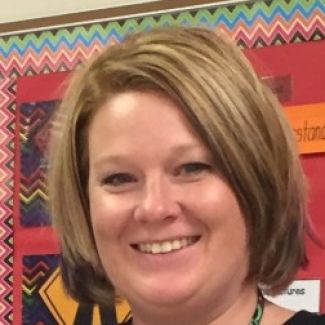Jessica Adams
Snapshot
Teach FIRST (Fluency, Interdependence, and Real-
World Solutions with Technology)
Research Question
Will personalized learning increase students’ fluency, engagement, critical thinking, collaboration, and problem solving strategies?
Area of Focus:
The problem of practice includes students’ performance on formative and summative assessments. The assessments indicate a weakness in the areas of math fluency, computation, critical thinking, and problem solving strategies. Our goal is to design a personalized learning environment that is engaging and enhances learning through technology and manipulatives.
Action Plan:
Research shows the students can explore math topics in more interactive ways by using technology. Playing math games helps students develop and use different strategies to increase their understanding and reasoning skills (Rutherford). Fifty first grade students will use iPads, Osmo games, an Osmo iPhone base, an iPhone, and personalized instruction to develop math fluency, critical thinking, problem solving, and collaboration skills. Instruction will be based on the Daily 3 Math structure in which students rotate through math stations. At one station, Math By Myself, students will use the iPads, iPhone, Osmo iPhone base, and Osmo games to work on math fluency. All students will get a minimum of 20 minutes of personalized instruction daily. Students will also work at the Math With Someone or Math Writing stations. At these stations, students will work collaboratively to solve math tasks, including those with real-world applications. Tasks will require a variety of problem-solving and creative thinking skills. Classroom teachers will collaborate to create tasks for students to be used during the Daily 3 rotations. Teachers will also collaborate on data that was gathered from both classrooms.
Parents will also be informed about this process during an “Operation Osmo: Learning Beyond the Screen” night and will also be kept up to date with news via classroom Facebook pages. Updates will also be posted on The Holler Website to keep other community members informed of our progress.
How will you evaluate your project outcome? What data/evidence will be collected; how will it be evidenced?
The outcomes that will be evaluated are increase in math fluency, collaboration, and problem solving strategies. The student growth outcome will be measured using a pre/posttest as well as formative and summative assessments throughout the 9-week period. The student engagement outcome will be measured by teacher observation and students self- reflection.
At the beginning of the first 9-week period both groups of students will be given the same pretest. Student pretests will be scored by the teacher and recorded in a spreadsheet. Observation notes will be made concerning collaboration and problem solving strategies utilized by students. Students will then receive the instruction for their designated group for the allotted time period. Formative and summative assessments will be administered throughout the 9-week period to measure ongoing student growth. At the end of the 9-week period students will be given a post test and observational notes will be taken concerning collaboration and problem solving strategies. The teacher will score the test and results will be analyzed and compared. The same process will be used when the students switch groups.

